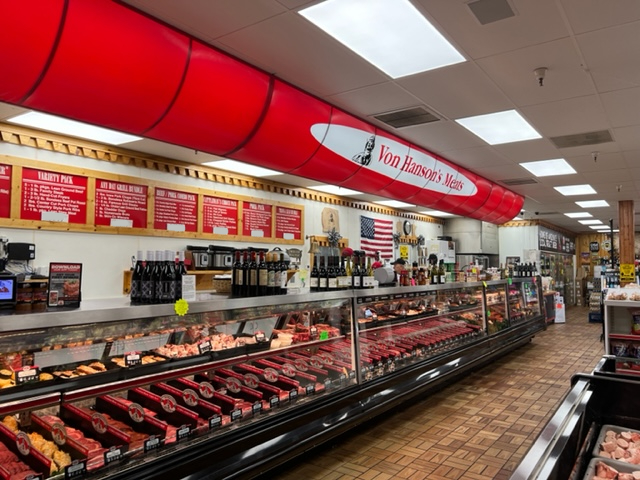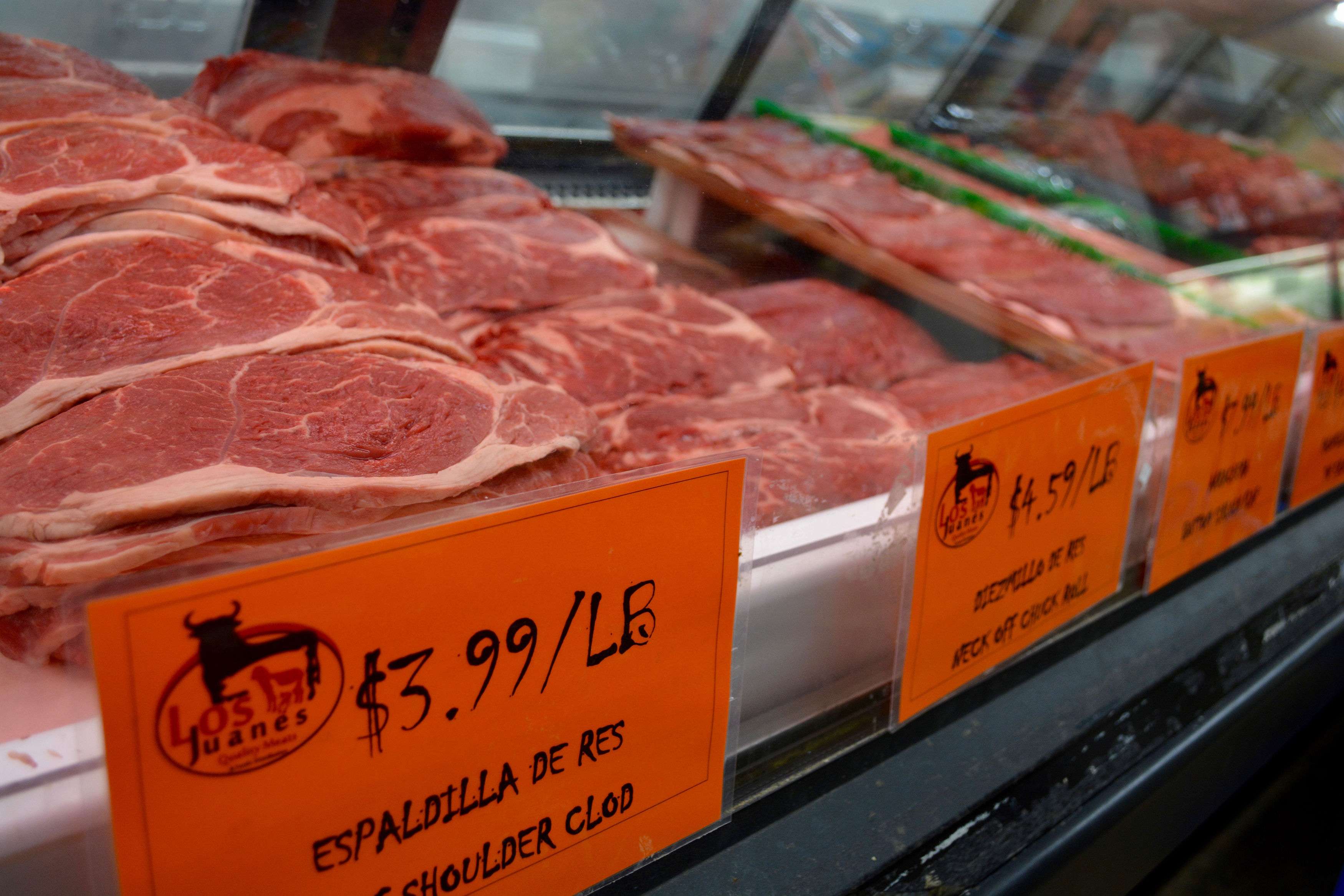See Bagley Farms Meat Market Edwardsville IL for Farm-Fresh Meat and Specialized Cuts
See Bagley Farms Meat Market Edwardsville IL for Farm-Fresh Meat and Specialized Cuts
Blog Article
Uncover the Art of the Butcher's Cut in a Modern Meat Market
In the ever-evolving landscape of modern meat markets, the butcher's cut has transcended its conventional origins, combining old-time craftsmanship with modern practices. What truly sets the modern-day butcher apart is their capacity to forge a much deeper connection between customers and the origins of their meat.
Advancement of Butchery Strategies

The mid-20th century saw butchery strategies better improved by scientific understandings right into muscle biology and meat aging, improving both tenderness and taste. Advancements like vacuum packaging and refrigeration extended product shelf-life, allowing butchers to expand offerings and improve quality assurance. This period additionally noted the surge of specialized equipment, such as band saws and meat slicers, which boosted accuracy and performance in meat processing.
The 21st century has actually introduced digital innovation right into the butchery realm. Electronic systems currently aid in monitoring pet provenance and maximizing cuts to satisfy specific client choices. Additionally, a resurgence in artisanal butchery has actually arised, mixing traditional abilities with modern knowledge to satisfy customers looking for honest and lasting meat options. This evolution highlights a dynamic interaction between practice and development, meeting contemporary needs while protecting the craft's heritage.

Understanding Meat Cuts

Understanding the ins and outs of meat cuts is necessary for both butchers and consumers looking for quality and worth. For butchers, specific cuts show skill and respect for the craft, ensuring very little waste and optimum return.
The key classifications of meat cuts include primitive, sub-primal, and retail cuts. Butchers after that break these down additionally into sub-primal cuts, prior to ultimately generating retail cuts readily available to consumers, like ribeye or tenderloin.
Recognizing muscle mass make-up is crucial; muscle mass used much more often by the pet often tend to be tougher and are best fit for sluggish cooking approaches, while less-used muscles, like those discovered in the loin, are a lot more tender and suitable for cooking or roasting. Familiarity with these distinctions equips consumers to make educated choices, boosting their culinary undertakings.
Choosing Top Quality Meat
Picking the ideal meat includes greater than simply choosing an aesthetically appealing piece from the screen. The art of choosing quality meat needs a critical eye and knowledge of certain attributes that indicate quality and quality. Pay interest to the shade; beef must have a bright, cherry-red tone, while lamb ought to show a soft pink tone, and pork a pale pink. This suggests the meat is fresh and hasn't been revealed to oxygen for also lengthy.
Second of all, take into consideration the marbling, which describes the white streaks of fat within the muscular tissue. Correct marbling is a crucial indicator of inflammation and flavor, as it thaws during cooking, enhancing the meat's juiciness. Bear in mind, higher marbling usually associates with superior high quality cuts, such as USDA Prime.
Structure is an additional essential factor; meat needs to really feel more helpful hints strong to the touch, not slimy or extremely soft. Furthermore, be conscious of the scent. Fresh meat should have a tidy, neutral smell, devoid of any type of sour or off-putting smells.
Coupling Cuts With Cooking Methods
Successfully coupling cuts of meat with the ideal see this cooking techniques is vital for achieving optimal flavor and structure. Various cuts differ in tenderness, marbling, and connective tissue material, each requiring specific methods to unlock their possibility. For example, tender cuts like filet mignon and ribeye, with their intrinsic marbling, benefit from high-heat, quick-cooking methods such as grilling or pan-searing. These approaches enhance the meat's natural tastes and make certain a juicy coating.
Alternatively, harder cuts like brisket and chuck roast are rich in collagen, which damages down into jelly when prepared gradually. These cuts are perfect for braising or slow-moving roasting, enabling the meat to soften over time and develop deep, complex flavors. Cuts such as brief ribs and pork shoulder get on well with slow-cooking techniques, where extended cooking times transform their durable structures into delicious recipes.
Lamb shanks and oxtail, which call for extended food preparation to soften, are excellent prospects for cooking or slow-moving simmering. These approaches coax out abundant, hearty tastes while maintaining wetness. By understanding the distinct qualities of each cut, cooks and home chefs alike can boost this link their cooking productions, ensuring each recipe is both satisfying and unforgettable.
The Butcher's Role Today
Browsing the evolving landscape of the modern-day meat market, the butcher's duty today extends past mere prep work of cuts. Contemporary butchers are culinary artisans, educators, and advocates for lasting techniques.
In addition to crafting accurate cuts, butchers now engage directly with clients, supplying cooking recommendations and tailoring choices to fit individual needs and choices. Their knowledge in meat aging, marbling, and flavor accounts encourages consumers to make enlightened choices, enhancing their culinary experiences. This personalized solution exhibits the butcher's advancing function as a relied on advisor in the kitchen area.
In addition, butchers are crucial in decreasing waste, using whole pets to develop diverse items such as sausages and stocks - bagley farms meat market edwardsville il. This thorough technique not only appreciates the animal but also aligns with contemporary sustainability objectives. This way, the contemporary butcher personifies both custom and advancement, adjusting to an ever-changing market while protecting the creativity and stability of their craft

Final Thought
Proficiency in recognizing diverse meat cuts and high quality signs empowers butchers to give educated recommendations, aligning particular cuts with optimal cooking approaches. By honoring historic methods while welcoming modern needs, the butcher's role stays vital in today's sophisticated meat market.
Report this page